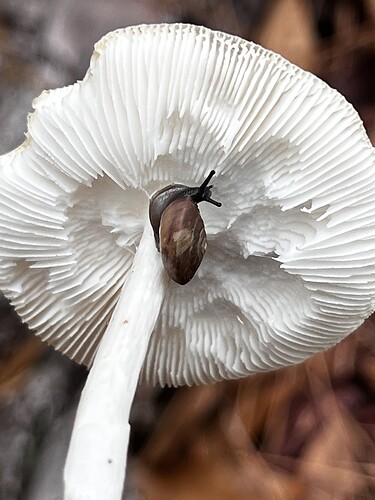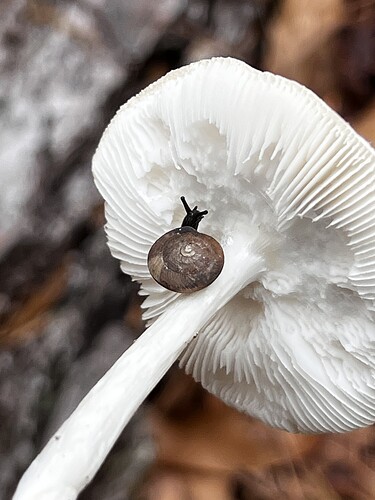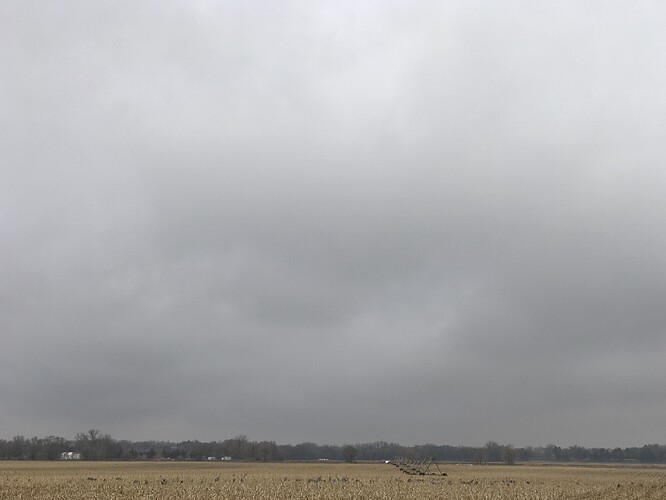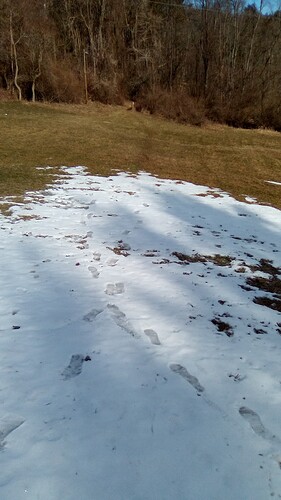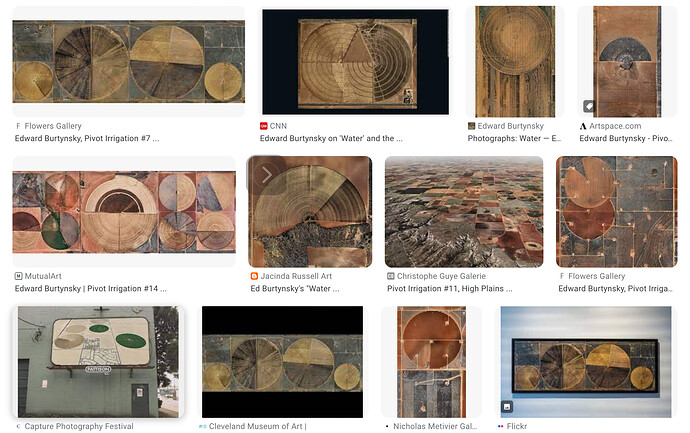There’s also a ‘western poison ivy’ that resembles it.
It is a blackberry-type vine. Grabbing it is probably still a bad idea, given the prickles.
We have a lovely variety of three-leaved, multi-stemmed can-type plants growing all over our property. Together. In what often seem to be heterogenous communes. They look nearly identical, but not quite. I need to figure out what the poison ivies (I think we have both eastern and western) bear fruit. Finally getting a look at the plants with fruit on them will help.
A few of the trees out in the wilderness part of the property have the big three on them, Poison ivy, Virginia Creeper and Grape! Fortunately, those are very easy to tell apart.
Cool.
I heard cranes heading north here last week, migrating from their time on the coast. Amazing birds. Central irrigation pivots became popular on the Texas plains about the time I left the farm. I pretty much worked with furrow irrigation, but the scarcity of water and the efficiency of the pivots worked together to dominate.
I heard some prehistoric sounding cranes this morning already, up in Michigan!
Out on a run, it feels warmer than usual, more like April than March. This patch of melting snow with the vanishing footprints made me imagine stepping out into a world like Narnia, sort of like the doorway at the end of Prince Caspian
I love the numbers we get here. It’s typically in the hundreds to low thousands, but twenty to sixty miles from here will be in the hundreds of thousands – the sound can be too much (not to mention the guano, depending… Depends might be good? ![]() ; - ).
; - ).
They are back in MI.
I remember seeing some similar aerial photos taken over mid-West, and commented that it was the low-resolution pixilated part of the Matrix.
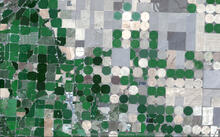
Fantastic! Are there any very large white ones among them?
Very pretty shapes! Its odd that pivot irrigation is not as common on the Canadian prairies. I notice the difference in patterns on the landscape when flying south into the States. Seems like straight-line irrigation systems are used here…maybe because the fields are in rectangular shapes? seems like making circles on rectangular fields misses the corners?
I’ve never seen a whooper, but I know that some get spotted now and then. (We see the short ones, swans, regularly, pretty much independent of season. ; - )
I’ve seen a whooping crane once here at the house as we are in the migration zone from the coast, where there is a sanctuary near Corpus Christi. A local man shot one about 20 years ago. Got a big fine, and 6 months in jail.
Wow–that is a strict one!
There is a lot of money invested in keeping whoopers around, and that puts a big value on each individual animal. I remember him being asked what it tasted like, and he said a little like spotted owl. Seriously, some people do hunt sandhill cranes, and cook the breast meat like steaks, sometimes nicknamed “filet mignon of the sky.”
Oh, my. That’s quite a dark sense of humor :).
I haven’t seen anything like them in Michigan, either, except in Burtynsky’s Water exhibit photos at the the Grand Rapids Art Museum. ![]() His photos are from all over the world, some of the farm photos in that exhibit, I think were from the Middle East even. If there was water in the environment, it was fair game for his photos.
His photos are from all over the world, some of the farm photos in that exhibit, I think were from the Middle East even. If there was water in the environment, it was fair game for his photos.

